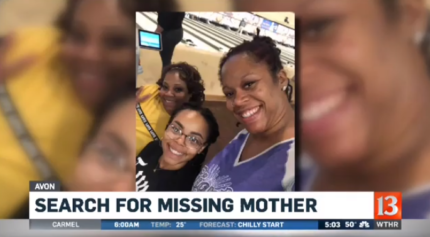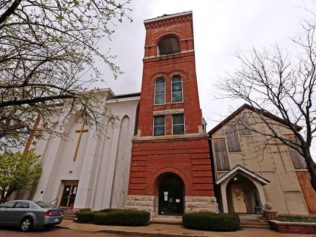Quilts are supposed to be warm and comforting.
But Indianapolis artist LaShawnda Crowe Storm’s quilt is provocative and disturbing — and purposely so.
The quilt, “Her Name Was Laura Nelson,” depicts the life-size image of the lynching of a black woman a century ago.
And now it is available for all to see, ponder and discuss. The quilt, which went on display at the Indianapolis Central Library, will be shown through March 23 as part of the library’s “Meet the Artists” exhibit, which includes work from 15 local black artists.
The quilt drew strong reactions from those who walked by the exhibit on Sunday.
“I find it very offensive,” said Randolph Davison, 55, an African-American and retired serviceman from Gary. “We’ve been through enough and don’t need remembrances like this.”
Davison said a piece like this does not belong in a public library.
“It makes me want to cry,” he said.
Tamara Moore, 37, a white woman from Indianapolis, was with her 7-year-old daughter, Samantha, when they came across the quilt.
Samantha seemed confused by the image, but her mother was clearly outraged by it.
“Why would they make a quilt like that? It’s horrible,” Moore said, who also said she didn’t think it belonged in a public library.
Oft-ignored history
The artist says such a response is a good thing. For many, Crowe Storm said, viewing the quilt is like opening a wound. No wound heals, she said, until it bleeds.
“Something that needs to be addressed is this history of racism,” Crowe Storm said. “Lynching was really about controlling a population to stay in their place.”
Community leaders and scholars say the quilt is a reminder of a time in history that many would rather ignore.
There is no ignoring this quilt. The woman’s image comes from a black-and-white photo of a lynching near Okemah, Okla., on May 25, 1911.
In a sea of soft white fabric bordered by black and red, the body of Laura Nelson dangles from a rope, head cocked sharply to the side on her broken neck.
“The art form is very important in the telling of the stories of black people,” said Valerie Grim, chairwoman of Indiana University’s Department of African American and African Diaspora Studies. “Lynching, as a reality of black people, was one of the worst moments in the history of America.”
Read more: IndianapolisStar


